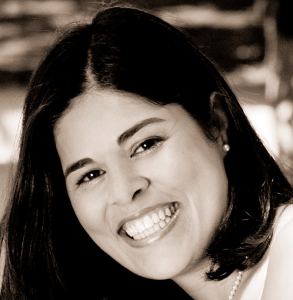 When the teachers at Country Day School, an American private school in Costa Rica, were trained in restorative practices several years ago, Veronika Marenco, a third grade teacher at the time, knew she had found something really useful. She started the school year with circles for her students to get to know one another, and followed it up every day with daily circles to check in and check out, play games, review math concepts and also address problems between students. A few weeks in, when parents were invited to "Back to School Night," Veronika even arranged the classroom in a circle of chairs and let parents (and a few children who came along) experience a circle to introduce themselves to one another.
When the teachers at Country Day School, an American private school in Costa Rica, were trained in restorative practices several years ago, Veronika Marenco, a third grade teacher at the time, knew she had found something really useful. She started the school year with circles for her students to get to know one another, and followed it up every day with daily circles to check in and check out, play games, review math concepts and also address problems between students. A few weeks in, when parents were invited to "Back to School Night," Veronika even arranged the classroom in a circle of chairs and let parents (and a few children who came along) experience a circle to introduce themselves to one another.
The parents liked the setting, said Veronika, and they liked how everyone had a chance to use the talking piece to participate and ask questions about the school year. Some even said that this was the first time they ever really enjoyed themselves at a "Back to School Night."
Veronika was originally trained in restorative practices by Miguel Tello, the director of the Center of Restorative Practices for Central America, an IIRP affiliate. In order to learn more about how to implement restorative practices in her work, Veronika is now enrolling in the IIRP Graduate school and has recently been awarded a scholarship to earn a master's degree. She has spent the past three weeks engaged in professional development at the IIRP Campus in Bethlehem, Pennsylvania, USA, and working as an intern at the IIRP offices. She said she has gotten a lot out of the experience: "Professional development is a powerful use of anyone's time when the knowledge gained can be implemented the following day at work, or in life."
In her school, with students from pre-kindergarten through 12th grade, Veronika said she was one of the few teachers to use circles consistently. But she thinks it made all the difference. Her colleagues in the other 3rd grade classes came and asked why her classes were so peaceful and everyone got on so well. "To be honest with you," said Veronika, "I think it was just the use of circles." She offered to model circles for the others and always shared her successful circle stories. The other teachers were keen to try and integrate circles in their classes but due to time constraints and meeting deadlines it became unrealistic for them. But for Veronika she eventually noticed that students were refusing to leave her class for the day if they didn't have a circle.
Their favorite activity, said Veronika, were fishbowl circles for "restorative problem solving." In this type of circle there are actually two circles, an inner and an outer circle. In the center circle are fewer chairs, and one chair is left empty so that people from the outer circle can join briefly if they have something to say, and then they return to their original seat. This structure is good for focusing attention on one student who has a problem they want help solving. For the third graders, they might talk about an issue they were having getting along with someone during break time, or perhaps they were feeling bullied or had problems with other kids during lunch. After the child presented their problem, the other kids would offer advice and feedback, and a note taker would be assigned to write all the ideas down so the presenter could remember the feedback that had been given.
Currently, Veronika has moved from having her own classroom to working in the school as an English language development teacher, who provides extra support for kids who need help with literacy. She still has time to use circles for brief check ins with small groups of children she works with outside of their normal class. But Veronika hopes that she may move into a position where she can model circles and restorative practices and help these processes become a sustainable part of the school environment. Already she has been asked by a group of early childhood staff at the school to run a circle for them to work through some differences they had among themselves. When they came together in a circle to talk it out, a lot of the bad feelings dropped and their relationships really improved.
This year she plans to discuss with the school administration implementing weekly circles for staff to check in about their weekends and discuss plans for the week, both so they can get to know one another better and also to better coordinate their working relationship.
"In a place like Costa Rica people are becoming more open to problem-solving techniques," said Veronika. "Big companies are trying to get the most out of employees. It's getting to be a fast-paced lifestyle and people have high levels of stress. I'm so positive about restorative practices. Once you're trained it's an easy tool to apply. You don’t need to refer to manuals or go back to the internet. It's simple and effective."
